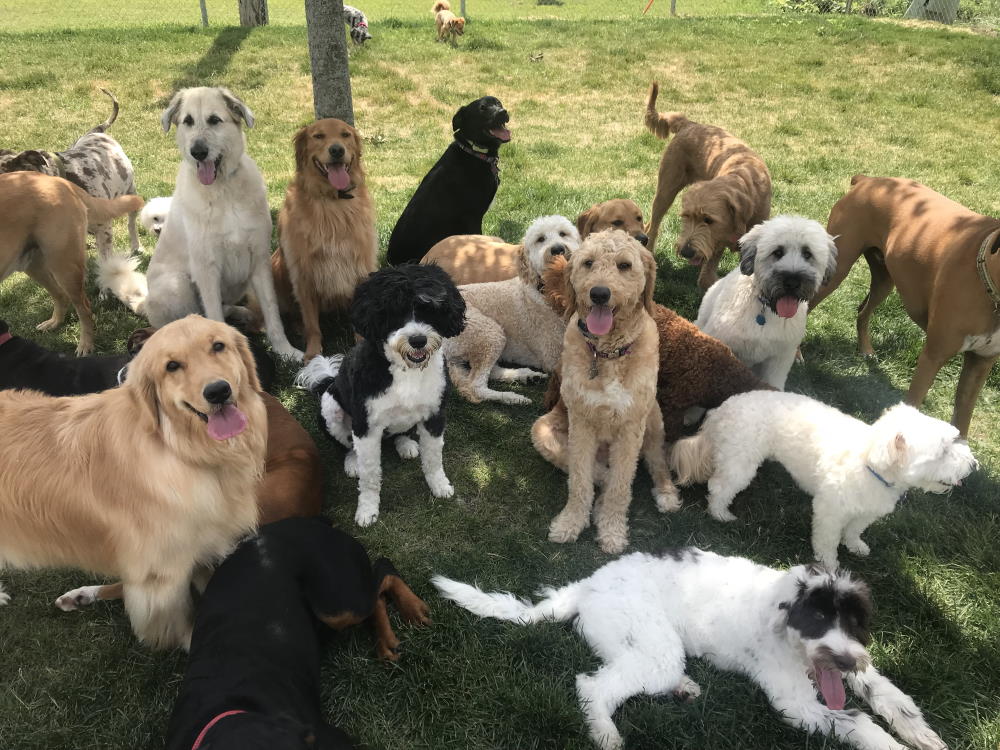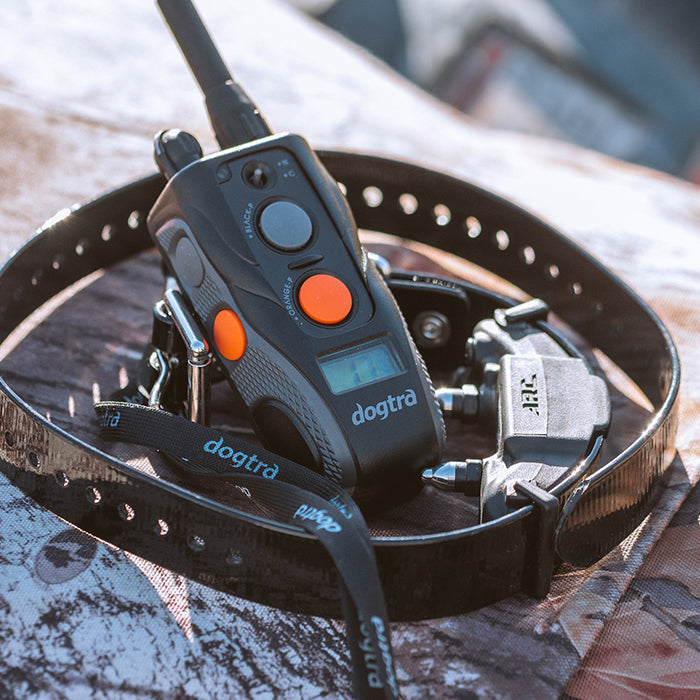THE 3DS OF DOG TRAINING: DURATION, DISTRACTION & DISTANCE

Most people purchase an e-collar to improve their dog’s ability to listen and pay attention when distracted. And most would agree that their dog is well-behaved under routine circumstances, but they struggle when excitement happens or when they take the leash off and give the dog freedom.
In order for a dog to be reliable under the widest array of circumstances, we have to train them while exposing them to three important variables. Keep reading to learn more about the three Ds of proofing dog training and how to master them for better results.
What are the 3Ds of Dog Training
The 3Ds of dog training refer to Duration, distraction, and distance. These three elements are essential to effective dog training, and each plays a critical role in ensuring that a dog can perform a command or behavior reliably in any situation. Duration, distraction, and distance are the make-or-break components of having a highly trained dog. By incorporating the 3Ds of dog training into their training programs, trainers can help dogs learn how to behave consistently in a variety of real-world situations. Let’s look deeper into each of them to help you master
Duration
Duration relates to how long a dog will maintain a particular behavior. I’ve heard people express fascination with a dog that can remain in a behavior for a period of time when told to do so. They believe it is hard to teach a dog to stay. In actuality, though, duration is probably the easiest concept to gain reliable consistency with. It is a matter of stopping the dog from moving as soon as he makes a mistake and teaching him a cue that lets him know when he is all done and free to move about.
When using the e-collar to assist in adding endurance to a behavior, you interrupt by tapping the button the very moment you see the dog shifting out of position. The better the timing in interrupting the mistake, the faster the dog learns to stay on task.
If needed, assist the dog in getting back into the original position. For example, if the dog is supposed to be sitting, interrupt with the e-collar as soon as he begins to shift into either a standing or a laying down behavior. Then help via the command, the leash, or a lure to get the dog back into a proper sit. After a bit of time, give a release cue like “Ok” or “Free” while encouraging the dog to move. Allowing a dog to move at liberty only after hearing a release cue makes it crystal clear they should stay until told otherwise.
Using the e-collar to work through duration variables is a matter of gradually increasing the level of challenge and helping the dog work through it by interrupting (tap the button) just as he is making a mistake and then helping him get back into the correct behavior. Add more time to the duration as the dog gains an understanding of what is expected.
Distractions
Another variable in building reliability is learning to work around distractions.
Dog distraction training is where many people struggle. Often, it is the underlying reason that caused a person to shop for an e-collar in the first place.
It is pretty easy to get a dog to behave well when there is nothing exciting going on. It is another issue altogether to get the dog to listen when visitors arrive or there is another dog around.
Using the e-collar to work through distraction variables is a matter of gradually increasing the level of challenge and helping the dog work through it by interrupting (tap the button) just as he is making a mistake and then helping him get back into the correct behavior. Add more distractions to the training as the dog gains an understanding of what is expected.
For instance, if you’re teaching the dog to hold a sit-stay while the doorbell rings, start out by practicing the situation numerous times before the real event happens. Have a family member play the role of a visitor by ringing the doorbell and entering while you work with the dog to remain sitting. Over a number of practice sessions, gradually increase the level of difficulty by actually moving to answer the door and by having new people visit at select times so you’re prepared to have the dog follow through. As you continue to work with your dog around a wide variety of distractions, reliability will improve, and your dog will generalize the concept of listening to you even when there are other interests competing for his attention.
Distance
The third variable that affects your dog’s reliability is distance. When we consider this element of training, we’re taking into consideration how far we are away from our dog AND how far our dog is from the distraction competing for attention.
It is important to realize that dogs will struggle to be reliable the farther away they are from you and the nearer they are to a distraction. Once you understand this important fact, use it to help analyze situations and respond accordingly.
In the beginning, the two variables (how close you are to your dog vs. how close the dog is to a distraction) should be practiced separately in order to make it easier for the dog to learn. If you’re working around heavy distractions, stay close to the dog and interrupt any unwanted change of behavior early before the situation gets too amped up and the dog is too focused on the distraction rather than paying attention to you.
When you’re working on gaining distance away from the dog and having him listen even though he’s not right next to you, find a way to “anchor” him to help maintain that distance. Anchoring the dog implies a mechanical way to assist in maintaining distance. This can be done by working on opposite sides of a fence, using a tie-out system to keep the dog in an area, or working on platform training to maintain stationary behaviors.
Using the e-collar to work through distance variables is a matter of gradually increasing the level of challenge and helping the dog work through it by interrupting (tap the button) just as he is making a mistake and then helping him get back into the correct behavior. Increase your distance from the dog or decrease the distance from distractions as the dog gains an understanding of what is expected.
If you haven’t already noticed, I used the previous sentence three times in this article, with only one word changed each time. The bottom line is, it doesn’t matter which variable you’re working on to improve your dog’s reliability, you have to PRACTICE AND INCREASE CHALLENGES INCREMENTALLY.
Final Thoughts
E-collars are a great addition to the toolbox to help improve reliability, but they won’t solve the problem if you aren’t willing to put in the effort and practice time to help the dog learn.
Finally, it should go without saying that it is of equal importance that you reward the dog for doing the correct things. But in case you need reminding, make sure to use plenty of rewards like play, toys, treats, praise, and freedom to reinforce that listening will earn the dog something worth working for!
Happy Training!




